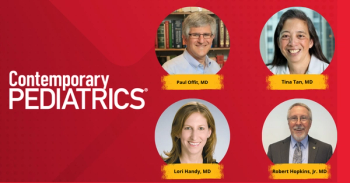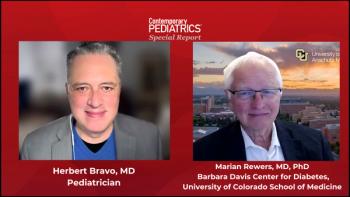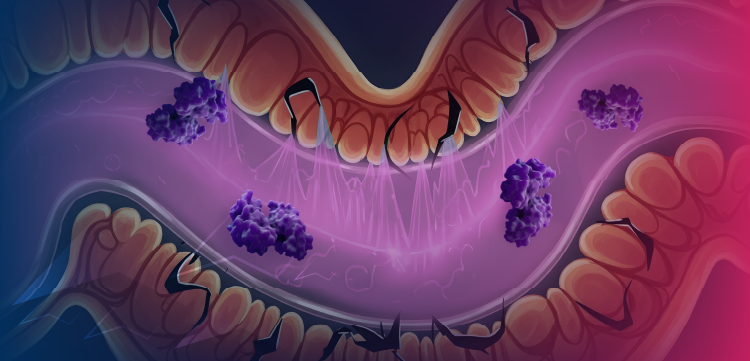
DB-OTO demonstrates improved hearing in 10 of 11 children with profound genetic hearing loss
Updated data from the phase 1/2 CHORD trial in 12 children with profound genetic hearing loss were presented at the Association for Research in Otolaryngology’s 48th Annual MidWinter Meeting.
New, positive data for Regeneron Pharmaceuticals' DB-OTO gene therapy among children with profound genetic hearing loss were presented at the Association for Research in Otolaryngology’s (ARO) 48th Annual MidWinter Meeting, according to a press release from the pharmaceutical company.1
Highlighted data, derived from the phase 1/2 CHORD trial (NCT05788536), included 10 of the 11 children with at least 1 post-treatment assessment demonstrated improvements in hearing. Additionally, 72-week results revealed speech and development progress in the first child dosed at 10 months of age.
“A year after treatment in one ear with DB-OTO, a child born profoundly deaf was able to enjoy music, engage in imaginative play and participate in bedtime reading when the cochlear implant on their other ear was removed," said Jay T. Rubinstein, MD, PhD, in a statement.
Rubinstein is a Virginia Merrill Bloedel Professor of Otolaryngology and Bioengineering and Director of the Bloedel Hearing Research Center at the University of Washington School of Medicine. He is also a CHORD clinical trial investigator.
"These seemingly small interactions are life-changing for these children as well as their families and these results continue to underscore the revolutionary promise of DB-OTO as a potential treatment for otoferlin-related hearing loss," said Rubinstein.
This hearing loss impacts approximately 1.7 of every 1000 children born in the United States, with approximately half of these cases featuring genetic causes. However, otoferlin-related hearing loss is very rare, with variants of the OTOF gene leading to a lack of a functional otoferlin protein that is critical for the communication between the sensory cells of the inner ear and the auditory nerve.
As of February 24, 2025, 12 trial participants have received DB-OTO. Nine of these participants were administered an intracochlear injection in 1 ear while 3 received it bilaterally.
"The surgical procedure to administer DB-OTO leverages an approach similar to cochlear implantation, which enables use in young infants," Regeneron stated.
In the first patient dosed in CHORD, 48-week results demonstrated improvement of hearing to near-normal levels in multiple speech frequencies.
"This included hearing thresholds that were within normal limits (0.25-2.0 kHz) in most speech-relevant frequencies and corroborated with positive auditory brainstem responses (ABRs)," stated Regeneron. "Particularly encouraging were results from formal speech perception tests in which the child demonstrated improvement from week 48 to week 72 and correctly identified words – such as mommy, cookies and airplane – that were presented at a conversational level without any visual cues."
The 10 of 11 participants that demonstrated a notable response after at least 1 post-treatment assessment saw improved hearing at various decibel hearing levels (dBHL). Further, of 5 participants with 24-week assessments, 3 experienced improvements in average hearing thresholds to "nearly normal" (n = 1; ≤40 dBHL) or normal (n = 2; ≤25 dBHL) hearing levels.
ABR responses were corroborated by hearing improvements assessed by pure tone audiometry.
One patient, according to the pharmaceutical company, did not experience a change from their baseline hearing to 24 weeks after dosing.
"I think this has profound impact on the treatment of children in general with hearing loss and how we approach them," said Lawrence R. Lustig, MD, chair, Department of Otolaryngology-Head & Neck Surgery, Columbia University, and clinical trial investigator, in a
"All children born with hearing loss really need to be genetically tested, because this particular form of deafness is relatively rare. Understanding which gene is involved in the deafness in children, if it can be identified, is going to be important," said Lustig.
Among all 12 participants from the CHORD trial, surgical procedure and DB-OTO were well tolerated, and there were no adverse events or serious adverse events considered related to DB-OTO, stated Regeneron. The company noted that 5 participants experienced transient post-surgical vestibular adverse events that resolved within 6 days of dosing (nystagmus, nausea, dizziness, vomiting).1
DB-OTO has received orphan drug, rare pediatric disease, fast track, and regenerative medicine advanced therapy designations from the FDA while the European Medicines Agency has designated orphan drug to the gene therapy.
References:
1. Latest DB-OTO results demonstrate clinically meaningful hearing improvements in nearly all children with profound genetic hearing loss in CHORD trial. Regeneron. Press release. February 24, 2025. Accessed February 24, 2025. https://investor.regeneron.com/news-releases/news-release-details/latest-db-oto-results-demonstrate-clinically-meaningful-hearing
2. Fitch, J. DB-OTO improved hearing to normal in child with profound genetic deafness. Contemporary Pediatrics. May 8, 2024. Accessed February 24, 2025. https://www.contemporarypediatrics.com/view/db-oto-improved-hearing-to-normal-in-child-with-profound-genetic-deafness
Newsletter
Access practical, evidence-based guidance to support better care for our youngest patients. Join our email list for the latest clinical updates.







